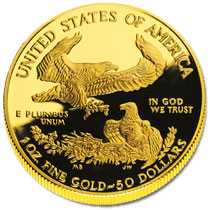
Vice President Ed Russell has copies of the 2002 Red Book on sale for $7 (pb) and $8.50 (hb); a portion of the proceeds flows into the MCCC treasury.
Gerald Grzenda reminded members that he is still seeking their help in recovering his stolen coins. His corrected telephone number is 202-514-1118 (and fax number 202-514-6113). The Pennsylvania State Police have assigned this case report #D3-1021202; phone them at 724-662-6162 with any tips. Gerry also distributed inventories of the missing coins. Contact him for further details if you have any questions. His email address is Gerald.Grzenda (at) usdoj.gov.
Treasurer Simcha Kuritzky reviewed the Club's financial status. Simcha also reminded members of the Washington Numismatic Society's meeting in DC on 17 September, which was to include a review of the recent ANA Convention and the sale of 75th Anniversary WNS medals.
Ken Swab noted that the Virginia Numismatic Association show was scheduled for 13-14-15 September at the Northern Virginia Community College campus.
Willy Massey announced that the ANA's World's Fair of Money show in Baltimore (2003) would provide the MCCC with a free table to promote itself. The Club will need volunteers to help staff that table, distribute materials, and answer questions. Simcha Kuritzky will be Chair of the Numismatic Theater at this meeting.
Door prize winners for July were YN Nicky Luck, and Stan Olesh, Henry Adler, and Jack Schadegg. The Gold Raffle was again won by lucky Nicky Luck. Mary Weaver's name was drawn for the Bison Chip; this is her first "leg" toward the three needed to win.
After arriving on a Friday at ANA Headquarters, Willy took a shuttle to the Colorado Springs Coin Show. Saturday was the kickoff and welcoming day, and the seminar proper commenced on Sunday. Each student began by making his or her own engraving tools --- taking a straight piece of metal, cutting it, shaping it, sharpening it, and then attaching it to a handle. Engraving tools must frequently be re-sharpened, Willy noted, since they lose their edge when working on the dies, sometimes within 10 to 20 minutes.
Engraving a die is a three-day process, though with experience a person can go much faster. ("Ron can do one in fifteen minutes, and that includes a smoking break!" Willy joked.) Each student did one (or more) obverse dies of steel; the instructors crafted reverse dies for everyone to use. They then struck tokens in pewter, a soft metal alloy. The striking of the pieces was a fascinating experience, Willy reported. The students melted the pewter and poured it into molds, creating ingots. They then rolled those ingots into strips and from the strips punched out blanks. They used a machine to upset the edges of the blanks and add edge lettering.
Finally, in a hand-operated screw press, the students struck tokens using the dies that they had themselves engraved. The press had two big forty-pound ball weights at the ends of a large "T" shape to store energy for the striking process. The planchets were struck without a collar, so they expanded somewhat during the minting process. "Without a collar, it's hard not to get a broad strike," Willy observed.
Ron Landis made reverse dies to celebrate the fact that 2002 was the 10th Anniversary Year for the Art of Engraving seminar. "He was phenomenal!" Willy said. Landis is also a master of making modern "hobo nickels"; his products sell for $800 to $1500 each, Willy said, and on occasion he makes dies and strikes "hobo nickels" in silver. He and Virginia Janssen also gave a mini-seminar on "Creative Errors" one evening.
When the class was over, Willy and his fellow students took a field trip to the US Mint in Denver, Colorado. The Mint has been closed to the public since September 11, 2001, for security reasons. Willy suspects that even private tours may cease after this year. Meanwhile, he and twenty of his fellow ANA summer students had an excellent behind-the-scenes visit. They split up into groups of three or four and had a chance to see all facets of the coining process. "I got to run my hands through the warm copper as pennies came out of the press," Willy said, "so some people are going to get pennies with my fingerprints on them!"
The tour included a view of the Denver Mint's gold depository vault, and of the old entrance to the Mint with its gun emplacements, huge brass vault doors, and orifices from which gas could be dispensed to incapacitate erstwhile robbers. No one ever attempted to rob the Denver Mint, Willy reported. The Mint now occupies a whole city block, and has two kinds of presses: "quad" ones which are vertically oriented and strike four coins simultaneously, and "horizontal" models which are used to produce state commemorative quarters among other coins. Blank planchets are fed into the horizontal presses via a rapidly spinning disc.
In response to questions, Willy reported that the Lincoln cent is now the "cash cow" (no pun intended) of the Mint, since it costs only 1/4th of a cent to produce each. Willy also explained that dies for coinage are made of tool steel, which must be hardened by heat treatment in furnaces. Since there were no local facilities to do that, instructor Ron Landis took the students' dies back to the Gallery Mint and hardened them there, then shipped them to each student. The pewter metal used for the in-class strikings was soft enough that the dies did not need hardening for that process.
In conclusion, Willy Massey gave his strongest recommendation that MCCC members who get the opportunity should attend ANA summer seminars. The classes are taught by the biggest names in the field, and students have ample opportunity to interact with their teachers. "It's really an awesome experience!"
(This page has been accessed 3785 times. It was last modified Monday, 28-Mar-2022 18:43:11 EDT.)